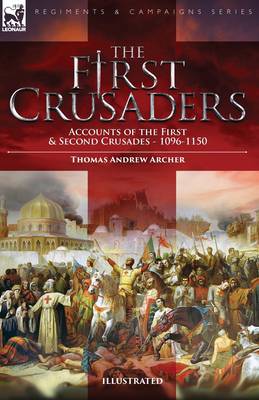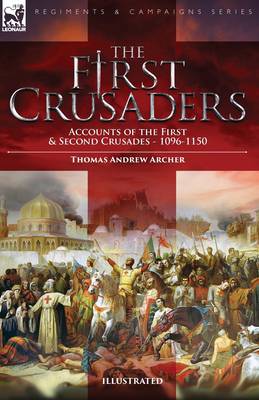
- Afhalen na 1 uur in een winkel met voorraad
- Gratis thuislevering in België vanaf € 30
- Ruim aanbod met 7 miljoen producten
- Afhalen na 1 uur in een winkel met voorraad
- Gratis thuislevering in België vanaf € 30
- Ruim aanbod met 7 miljoen producten
The First Crusaders
Accounts of the First and Second Crusades-1096-1150
Thomas Andrew ArcherOmschrijving
The First and Second Christian Crusades to the Holy Land
Thomas Archer was a well regarded historian on the subject of the Crusades and was the author of a substantial work which examined them in their entirety. That work covers a long period of time (1095-1244) and embraces many different campaigns, engagements and evolving methods of waging war. For students and readers of military history, Archer's work has now been accessibly divided by Leonaur's editors into shorter historical periods. The Seljuk Turkish domination of the Holy Land during the later 11th century threatened local Christian communities and pilgrims from Europe and Byzantium. Pope Urban II encouraged military support for the Byzantines and an armed pilgrimage. The first expedition known as 'The Peoples Crusade' was a complete disaster with over 60,000 of the pilgrim army slaughtered in southern Turkey by the Seljuks in 1096. Another effort led by by members of the nobility with military experience, including Bohemond of Taranto, and known as 'The Princes Crusade' set off in 1096 and was more successful securing victories at Nicea, Dorylaeum and Antioch. Jerusalem was reached in July 1099 and its defenders massacred. A Fatimid counter attack was defeated at Ascalon and Crusader states were established in the Holy Land. One of these so called 'counties', Edessa, fell to the incursions of the Turkmen Atabeg, Zengi. The ensuing Second Crusade failed to achieve any of its objectives in the Middle East which included an ill-advised assault on Damascus. However, it did contribute to the eventual expulsion of the Moors from Europe when a force of Northern European Crusaders assisted the Portuguese Army in the capture of the city of Lisbon.
Leonaur editions are newly typeset and are not facsimiles; each title is available in softcover and hardback with dustjacket.
Specificaties
Betrokkenen
- Auteur(s):
- Uitgeverij:
Inhoud
- Aantal bladzijden:
- 204
- Taal:
- Engels
Eigenschappen
- Productcode (EAN):
- 9781915234438
- Verschijningsdatum:
- 2/11/2022
- Uitvoering:
- Paperback
- Formaat:
- Trade paperback (VS)
- Afmetingen:
- 140 mm x 216 mm
- Gewicht:
- 263 g

Alleen bij Standaard Boekhandel
Beoordelingen
We publiceren alleen reviews die voldoen aan de voorwaarden voor reviews. Bekijk onze voorwaarden voor reviews.











